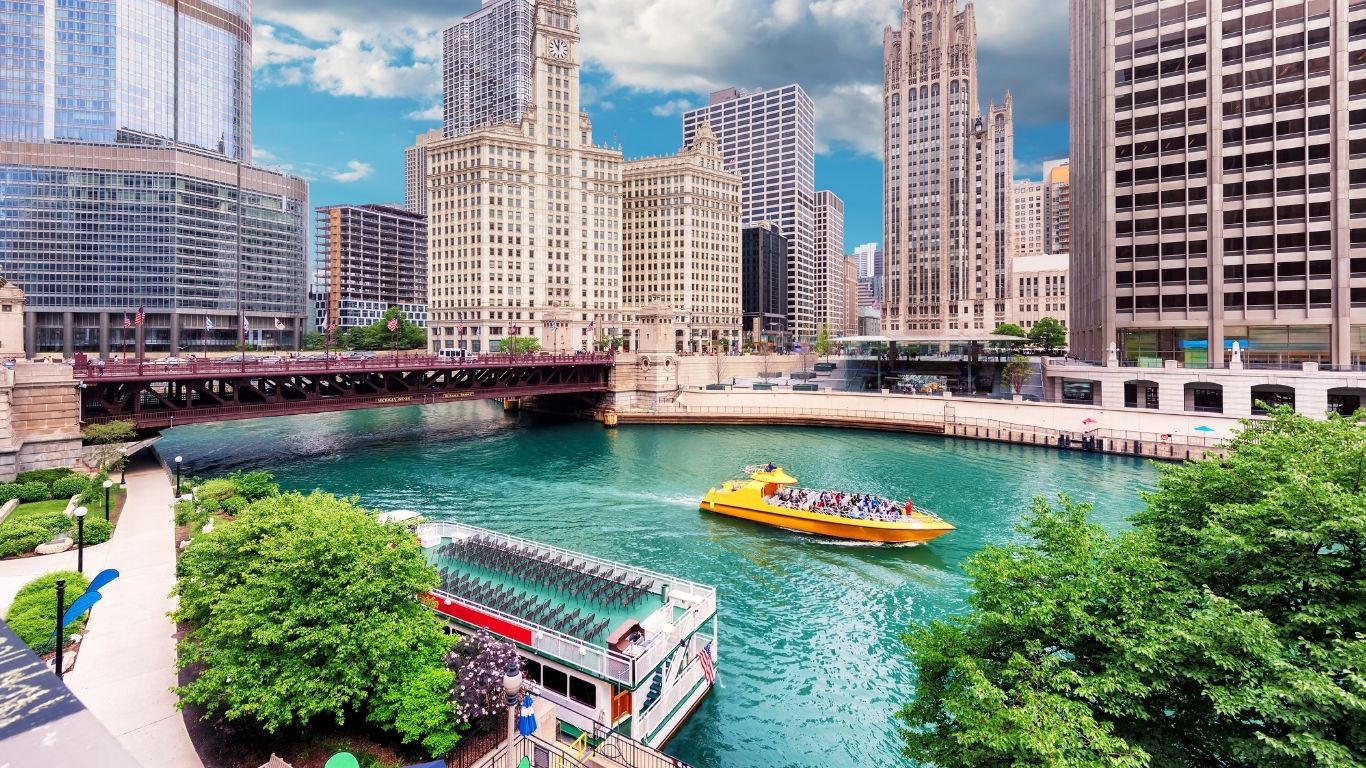
Where to Take the Best Photos in Chicago? Our 10 Must-See Spots
Our 10 Must-See Spots for Picture-Perfect Memories
Chicago is the most populated metropolis in the Midwestern United States and the U.S. state of Illinois. Chicago is a global centre for industry, education, technology, telecommunications, transportation, finance, culture, and commerce. It has a ton of beautiful locations! Although it is difficult to pick just ten, we have compiled a list of our top ten locations for stunning photos while you're there.
We're sharing our top picks for breathtaking photo spots in Chicago in this guide. In order to avoid crowds and capture the ideal light, we also advise you on the best time and method to visit each location.
Let's take a tour of the city's most picturesque locations, ideal for making memories along the way.
1. Cloud Gate (“The Bean”) – Millennium Park
Cloud Gate, the focal point of Grainger Plaza at Millennium Park in the Loop neighbourhood of Chicago, is a public sculpture by a British artist who was born in India. The sculpture, which was built between 2004 and 2006, is known as "The Bean" due to its shape—a moniker Kapoor eventually came to like. Its highly polished, gleaming exterior is made up of 168 stainless steel plates that have been welded together without any visible seams. It weights 110 short tonnes and has dimensions of 33 by 66 by 42 feet. The sculpture and plaza are situated between McCormick Tribune Plaza & Ice Rink and the Chase Promenade, above Millennium Hall.
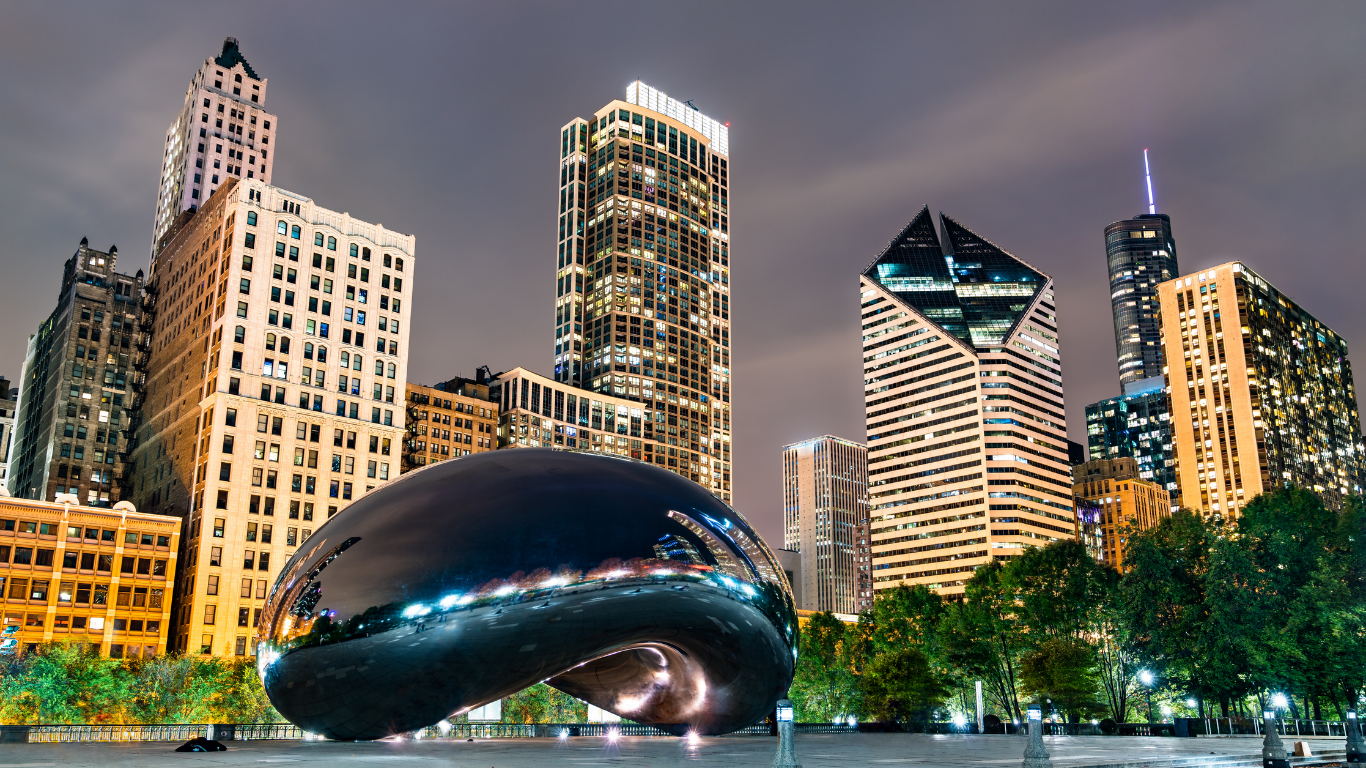
- Why is it exotic? 🤔
A shiny bean-shaped sculpture reflecting the city skyline and people. - Best time to visit 📅
Early morning before the crowds. - Photography tip 📷
Stand underneath for creative wide-angle shots.
2. Skydeck – Willis Tower
The Willis Tower, a 110-story, 1,451-foot skyscraper in the Loop neighbourhood of Illinois, was once and is still frequently referred to as the Sears Tower. Architect Bruce Graham and engineer Fazlur Rahman Khan of Skidmore, Owings & Merrill (SOM) designed it. It was the tallest building in the world when it debuted in 1973 and remained that way for almost 25 years. It is the 23rd-tallest structure in the world and the third tallest in the Western Hemisphere. The Skydeck observation deck, the highest in the United States, receives over 1.7 million visitors annually, making it one of the most visited tourist attractions in Chicago.

- Why is it exotic? 🤔
Glass boxes extending out from the 103rd floor with jaw-dropping views. - Best time to visit 📅
Sunset for city lights and golden colors. - Photography tip 📷
Lie down in the glass box for a dramatic perspective.
3. Navy Pier
Situated in the Near North Side community area's Streeterville neighbourhood, Navy Pier is a 3,300-foot pier on the shores of Lake Michigan. One of the most popular tourist destinations in the Midwestern United States, Navy Pier is home to more than 50 acres of stores, eateries, live theatres, family attractions, parks, gardens, and exhibition spaces. Every year, more than nine million people visit Navy Pier. It is the second most popular tourist destination in Chicago and one of the most popular in the whole Midwest.
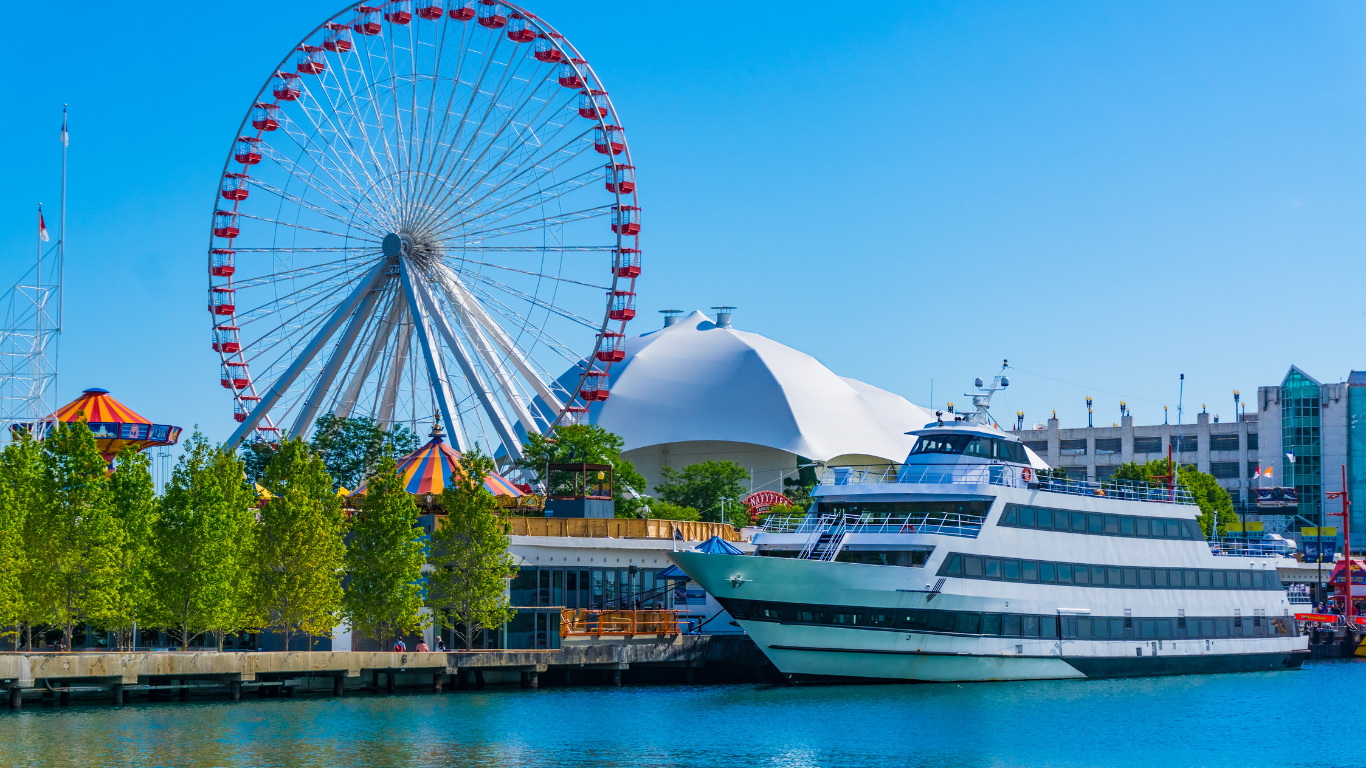
- Why is it exotic? 🤔
Iconic lakefront with Ferris wheel, boats, and skyline views. - Best time to visit 📅
Evening when the city lights up. - Photography tip 📷
Frame the skyline behind the Ferris wheel.
4. Riverwalk
From Lake Michigan and the Outer Drive Bridge westward to the Wolf Point neighbourhood and Lake Street, the Chicago Riverwalk is a multipurpose public open space situated on the south bank of the main branch of the Chicago River in Chicago. A Vietnam War memorial, eateries, pubs, cafes, tiny parks, and places to rent boats and kayaks are all located along the Chicago Riverwalk.
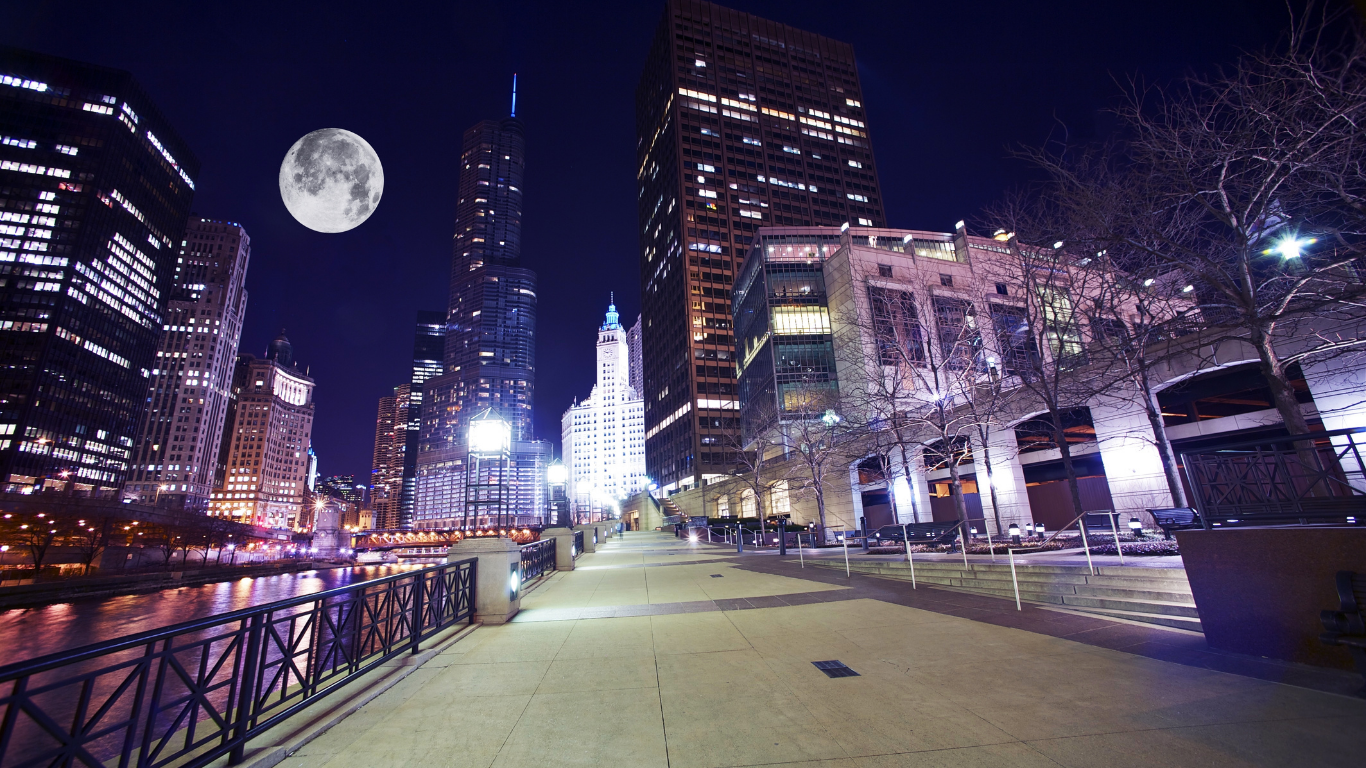
- Why is it exotic? 🤔
Charming path along the Chicago River with bars, bridges, and reflections. - Best time to visit 📅
Late afternoon for a golden glow on skyscrapers. - Photography tip 📷
Capture the water reflections with a long exposure.
5. Chicago Theatre
The Chicago Theatre, formerly the Balaban and Katz Chicago Theatre, is a historic theatre in the Loop neighbourhood on North State Street. The Chicago Theatre was a major movie theatre chain from 1925 until 1945, together with the other B&K theatres. The Chicago Theatre is currently owned and run by Madison Square Garden, Inc., a 3600-seat performing arts arena used for stage plays, magic shows, comedies, speeches, athletic events, and concerts of popular music.
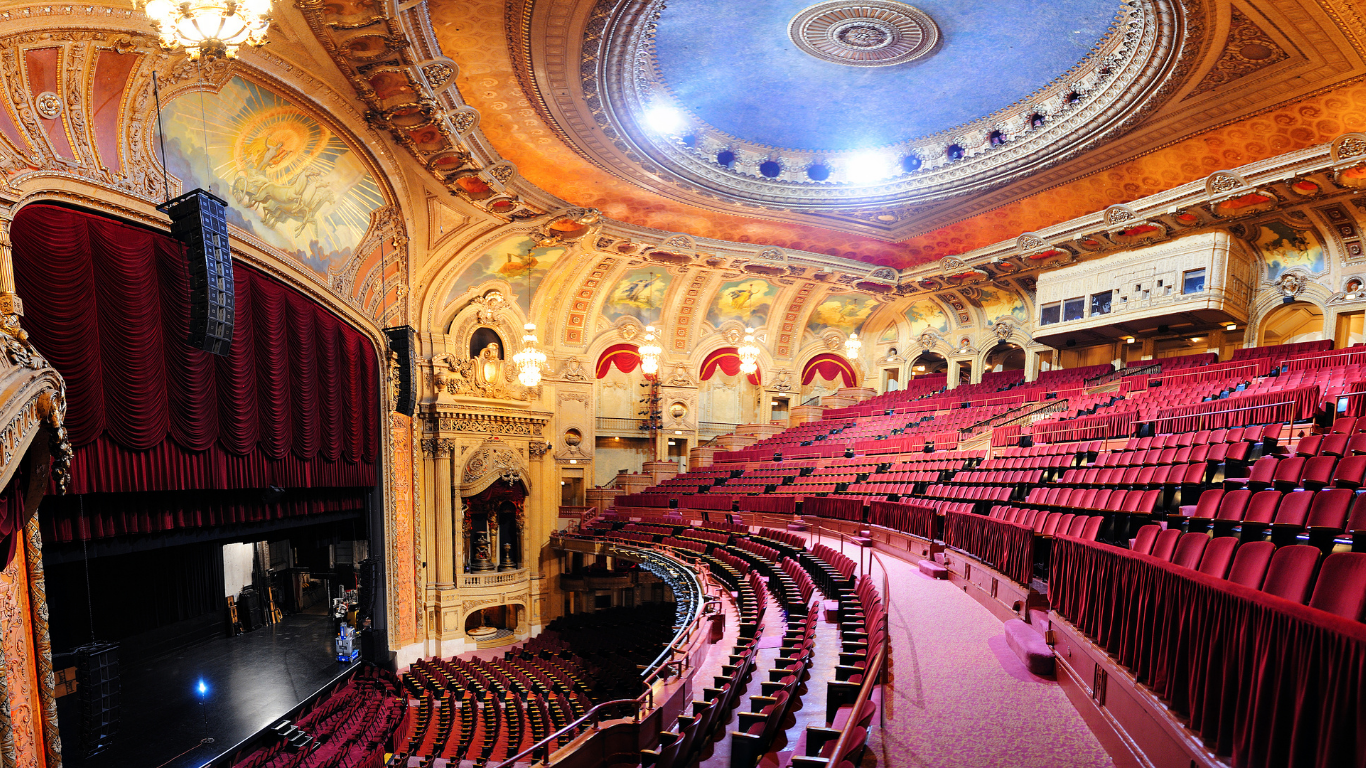
- Why is it exotic? 🤔
The famous neon-lit marquee sign is pure Chicago history. - Best time to visit 📅
Night, when the sign glows brightest. - Photography tip 📷
Shoot straight-on for a perfectly symmetrical shot.
6. 360 Chicago – Hancock Building
A Peruvian-American lead designer created the 100-story, 1,128-foot-tall supertall skyscraper known as the John Hancock Centre, which is situated in the Magnificent Mile neighbourhood. When it was completed in 1968, it was the tallest structure in Chicago and the second-tallest structure in the world, behind the Empire State Building in New York City. At the moment, it is the fourteenth-highest structure in the US and the fifth tallest in Chicago.
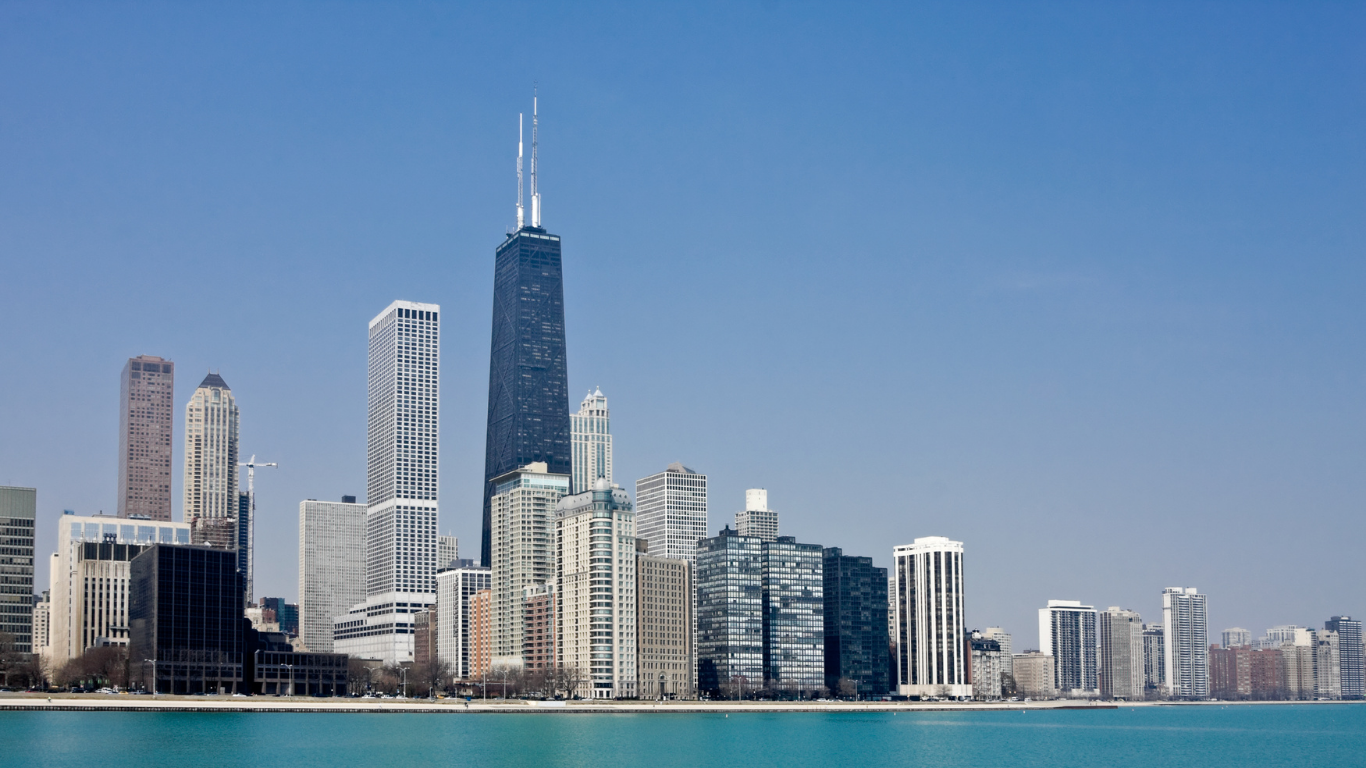
- Why is it exotic? 🤔
A different perspective of the skyline and Lake Michigan. - Best time to visit 📅
Evening for twilight over the lake. - Photography tip 📷
Use the glass reflection for artsy compositions.
7. Wrigley Field
The Chicago Cubs, one of the city's two Major League Baseball teams, call Wrigley Field, a ballpark on the North Side, home. Before becoming Wrigley Field in 1927, it was known as Cubs Park from 1920 to 1926. There are now 41,649 seats in the stadium. Famous features of Wrigley Field include the red marquee over the main entrance, the hand-turned scoreboard, the ivy-covered brick outfield wall, and the unique wind patterns off Lake Michigan. Viewers can see the stadium from the rooftops behind the outfield, and it is located in a mostly residential area without parking lots.
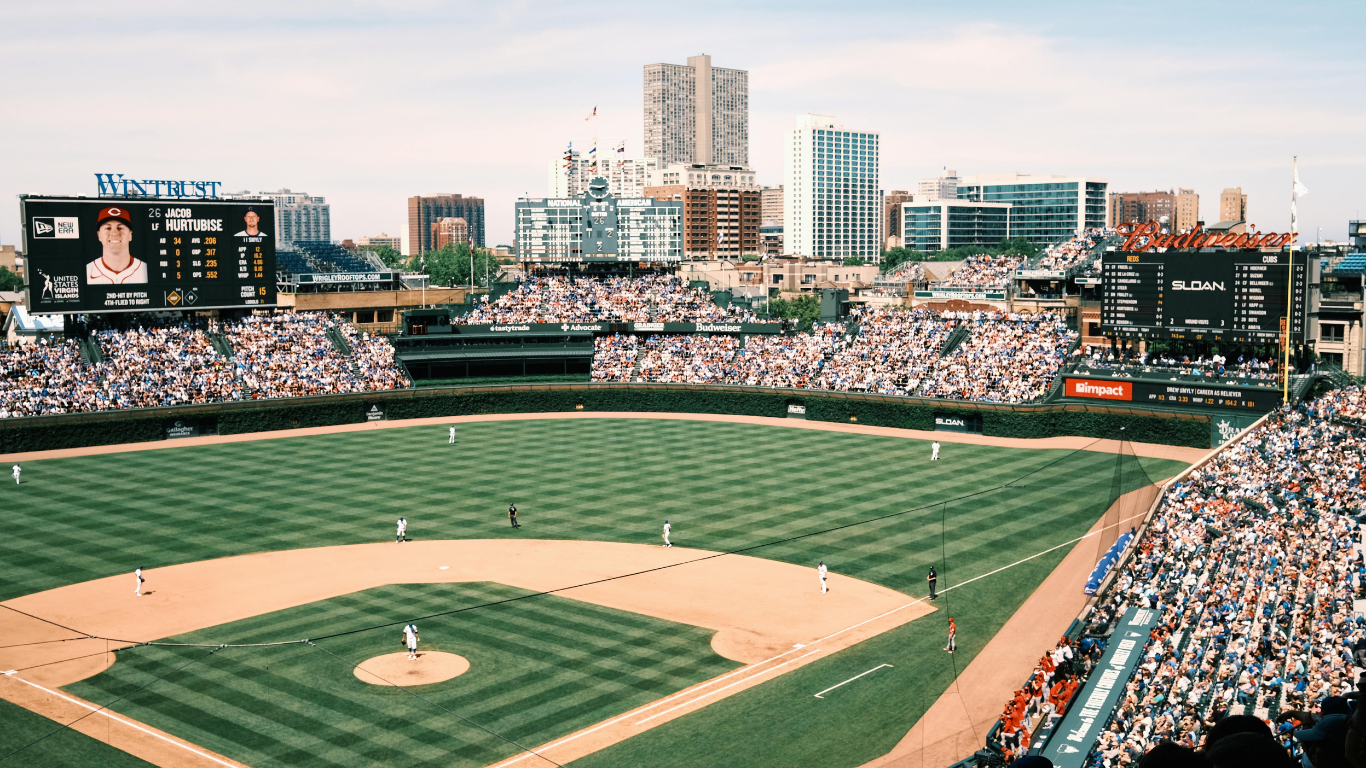
- Why is it exotic? 🤔
Historic baseball stadium with vintage charm. - Best time to visit 📅
Day game or golden hour. - Photography tip 📷
Frame the red marquee with fans in motion.
8. Lincoln Park & Zoo Skyline View
The Lincoln Park Zoo, which is situated in the Lincoln Park neighbourhood of Chicago, has one of the most stunning views of the city skyline. Visitors can take in the ideal fusion of architecture and environment from the zoo grounds and the neighbouring nature boardwalk, where the famous skyscrapers of downtown Chicago rise exquisitely behind the verdant surroundings. One of the oldest zoos in the US, Lincoln Park Zoo is a popular destination for both locals and visitors, spanning more than 35 acres and offering free admission. This place offers some of the greatest photo opportunities in Chicago and is ideal for strolling around the pond, exploring the zoo.
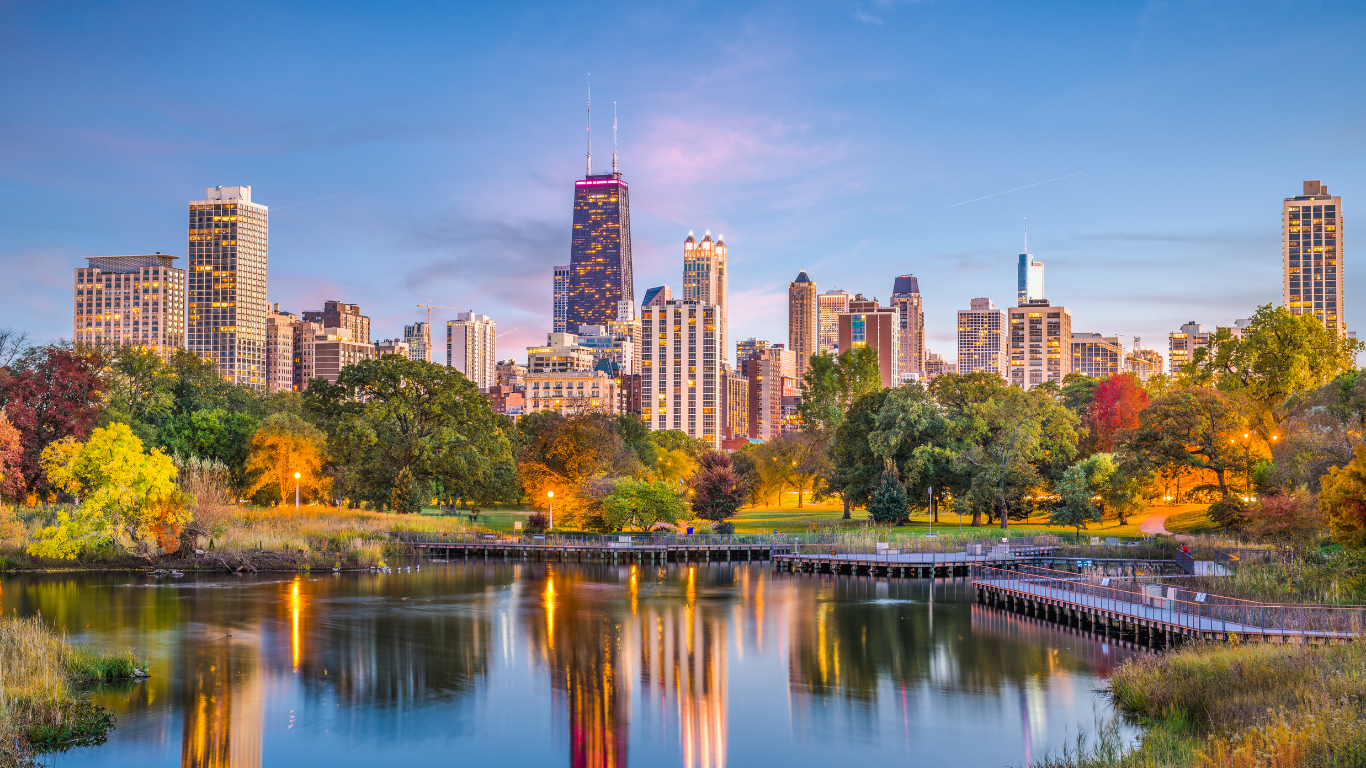
- Why is it exotic? 🤔
Frame the red marquee with fans in motion. - Best time to visit 📅
Morning, when it’s quiet. - Photography tip 📷
Shoot from the bridge for the skyline + park combo.
9. Buckingham Fountain – Grant Park
Buckingham Fountain is located in the center of Grant Park, between Queen's Landing and the end of Ida B. Wells Drive, a Chicago landmark. One of the biggest fountains in the world was dedicated in 1927 and given to the city by philanthropist Kate S. Buckingham. Inspired by the Palace of Versailles' Latona Fountain, this rococo wedding cake-style structure allegorically depicts neighbouring Lake Michigan. Normal water jet displays and nighttime coloured light shows are part of the fountain's normal operation, which runs from mid-April to mid-October. Festival lights are used to adorn the fountain in the winter.
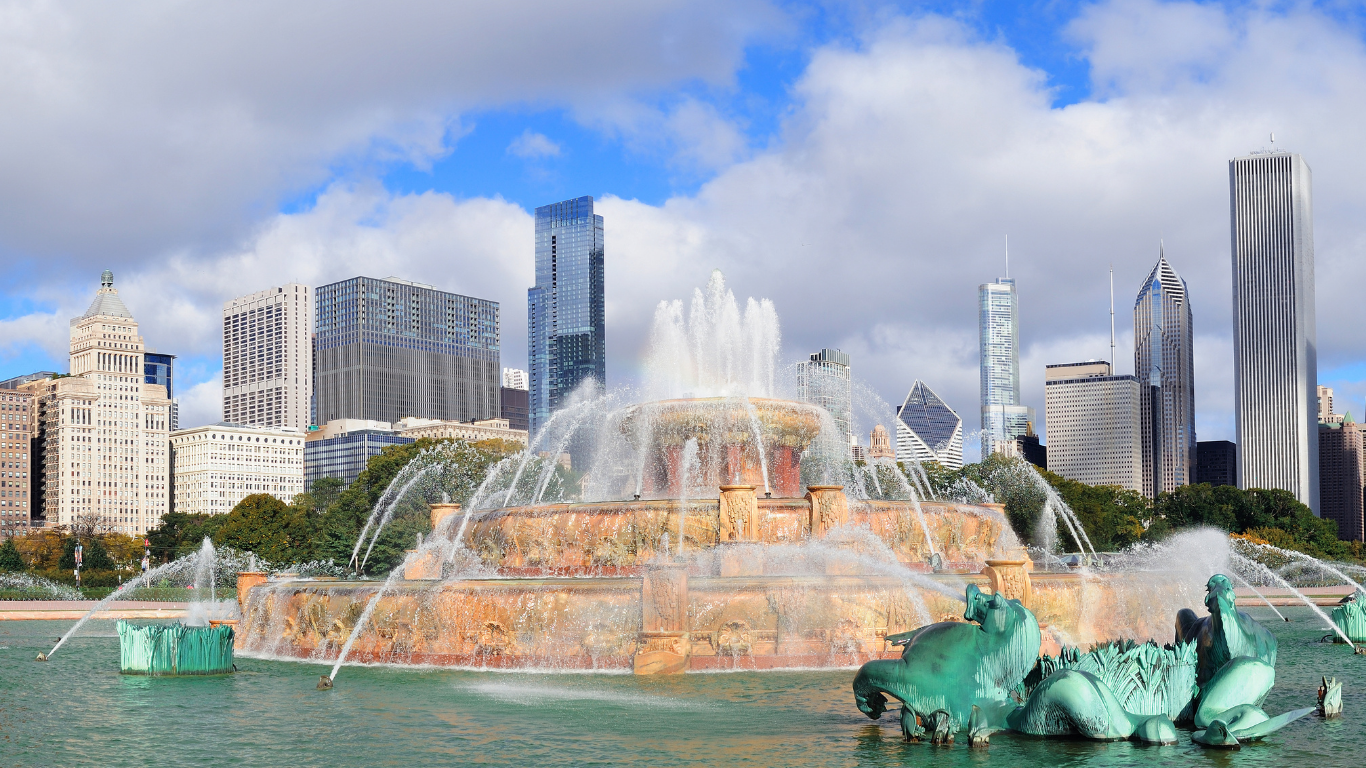
- Why is it exotic? 🤔
One of the largest fountains in the world, with water shows. - Best time to visit 📅
Evening when it lights up. - Photography tip 📷
Use a slow shutter to blur the water streams.
10. Street Murals – Wabash Arts Corridor
The Wabash Arts Corridor, an outdoor museum in Chicago's South Loop neighbourhood, is well-known for its dynamic and constantly shifting street murals. The hallway, which stretches across parking lots, alleyways, and building walls, is lined with expansive pieces made by both domestic and foreign artists. The colourful murals highlight Chicago's strong creative spirit and breathe life into the city's streets. The Wabash Arts Corridor is one of the city's most photographed public art locations, featuring over 40 installations, with plenty of chances for striking and unforgettable pictures.
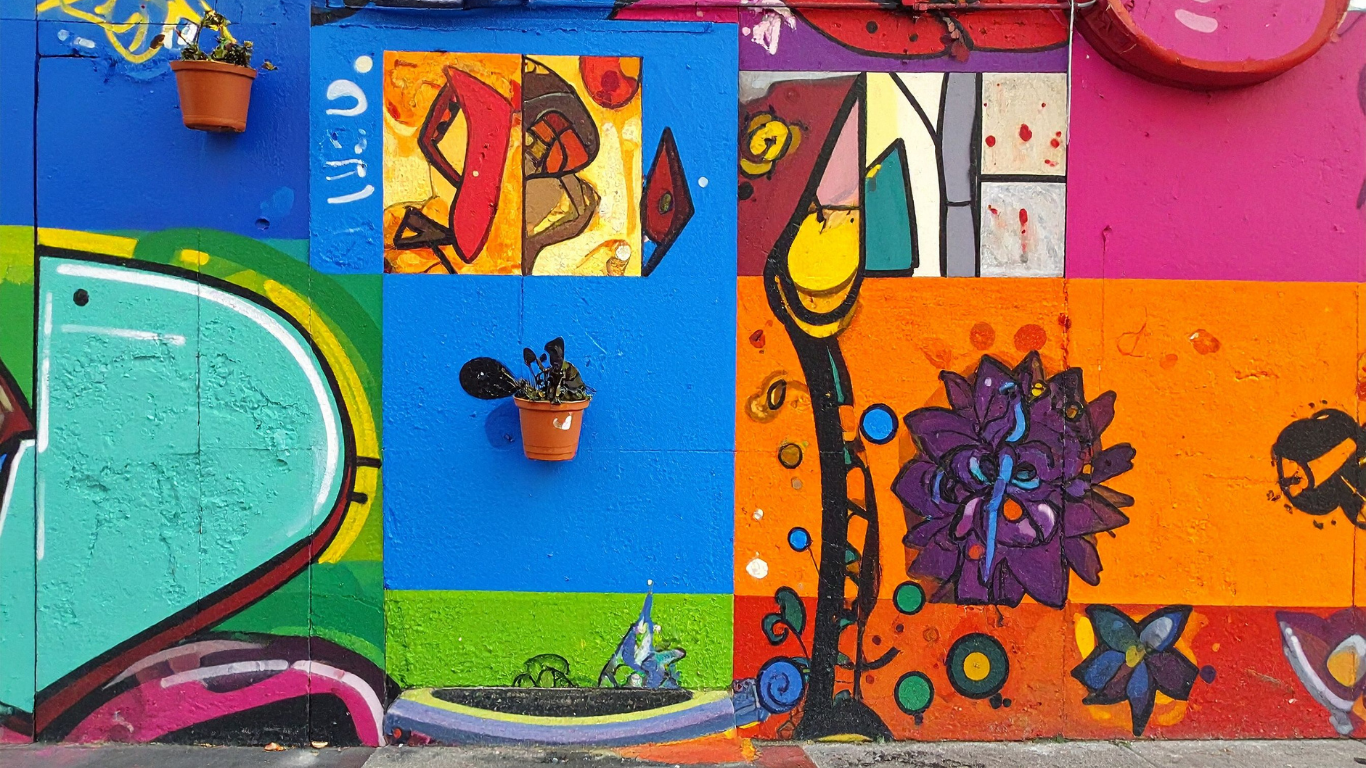
- Why is it exotic? 🤔
Huge, colorful murals turning walls into art. - Best time to visit 📅
Afternoon for bright light. - Photography tip 📷
Include people for scale against the murals.
Final Thoughts
These are the top photography spots you won't want to miss in Chicago. However, there is much more to see and enjoy, as the city offers endless photo opportunities. Take a walk and explore more, and make both your day and your photos amazing. Hopefully, this guide will help you capture your best moments in Chicago.
Ready to explore?
Don’t forget to bring extra storage, as you’ll be taking a lot of photos.
Check Out Our Blog

Where to Take the Best Photos in Hamburg? Our 10 Must-See Spots


Where to Take the Best Photos in Budapest? Our 10 Must-See Spots


Airbum vs. Google Photos: Best Picture Sharing Apps







